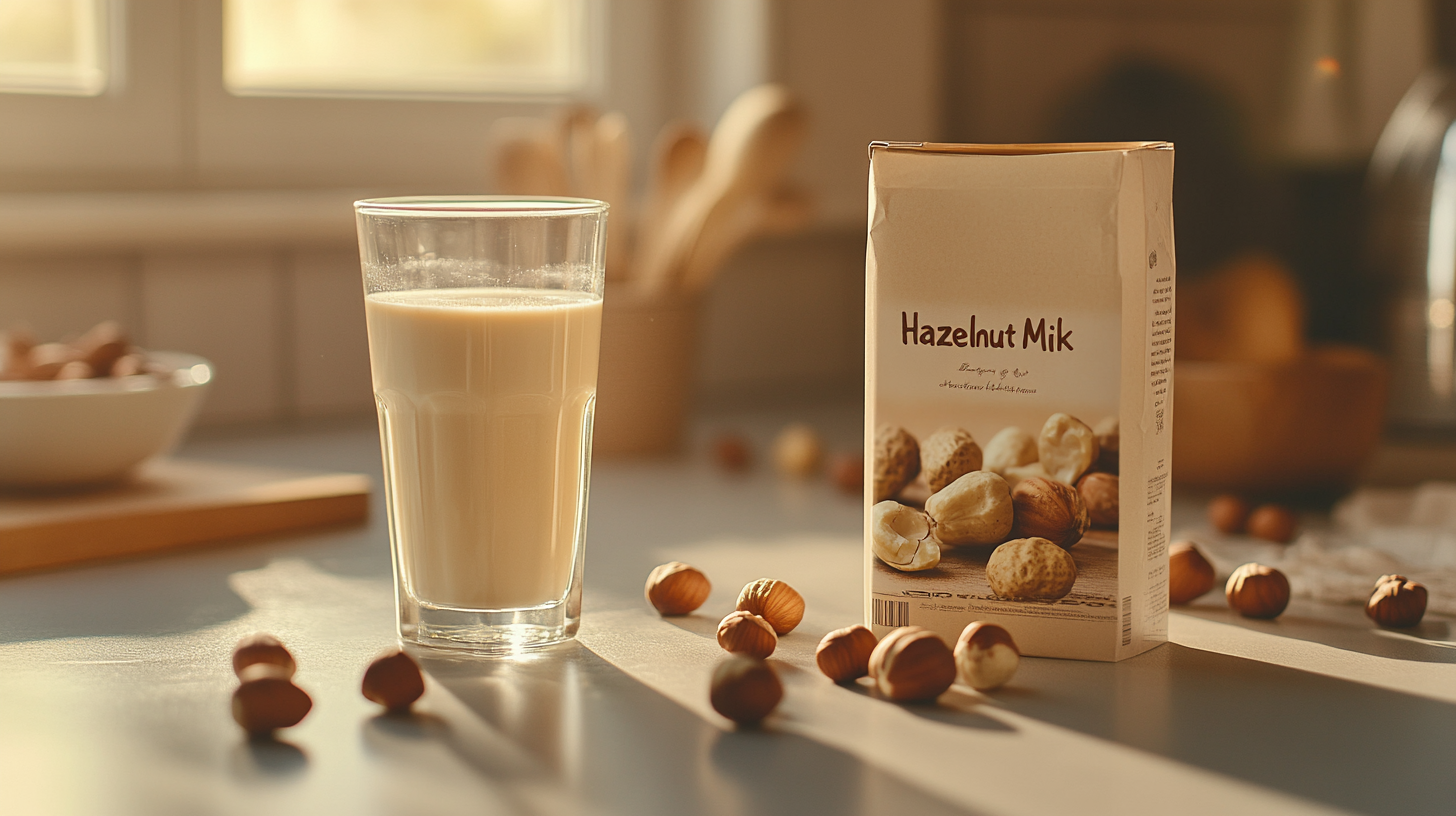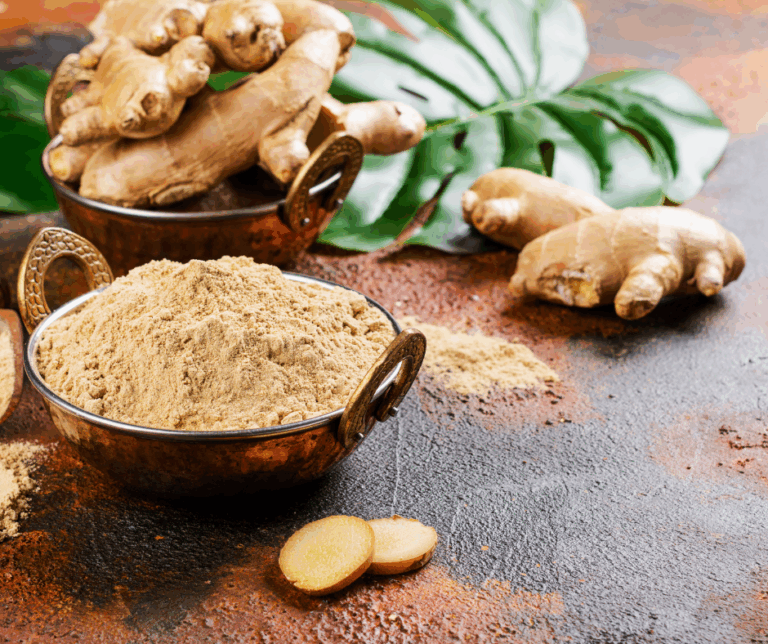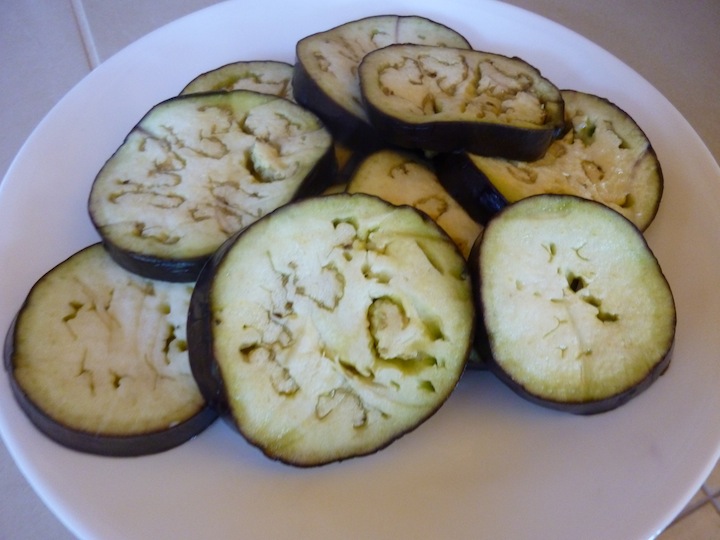Ditch the Dairy: Can Hazelnut Milk Be Your New Health Secret Weapon?
The morning sun streams through the kitchen window, casting a warm glow on your meticulously crafted latte. But this isn’t just any latte. This is a testament to a quiet revolution brewing in kitchens worldwide, a subtle shift away from tradition towards innovation, driven by a blend of health consciousness, ethical considerations, and a burgeoning palate for plant-based alternatives. For many, the journey away from dairy began with almond, then oat, perhaps even soy. But what if the true secret weapon, the unsung hero waiting to be discovered, has been hiding in plain sight, nestled within the delicate, earthy embrace of the hazelnut?
We are living in an era of unprecedented dietary exploration. The days of dairy reigning supreme, unquestioned and ubiquitous, are fading into memory for an ever-growing segment of the population. From health-conscious millennials to environmentally aware Gen Z, and even those simply seeking a delicious new flavor profile, the quest for the perfect plant-based milk is a personal odyssey. And in this journey, hazelnut milk is emerging not just as another contender, but as a surprisingly potent, nutritionally dense, and undeniably luxurious alternative, quietly redefining our morning rituals and culinary landscapes. Could this humble nut’s creamy elixir truly be your new health secret weapon? Let’s embark on a deep dive into the enchanting world of hazelnut milk, unraveling its ancient roots, its modern production, and its compelling health narrative, all while exploring why it might just be the unsung hero your diet has been waiting for.
The Unraveling of Dairy: Why the Exodus?
Before we crown a new king, it’s essential to understand the abdication of the old. The reasons for ditching dairy are as diverse as the individuals making the choice, but they generally coalesce around two major pillars: health and ethics/environment.
The Health Imperative: For a significant portion of the global population, dairy simply doesn’t agree with them. Lactose intolerance, a deficiency in the enzyme lactase needed to digest the sugar lactose, affects an estimated 68% of the world’s adults. Symptoms range from uncomfortable bloating and gas to severe abdominal pain, turning a simple glass of milk into a digestive nightmare. Beyond lactose intolerance, dairy allergies, particularly in children, can trigger more severe reactions, including hives, swelling, and even anaphylaxis.
Even for those without overt intolerance or allergy, dairy has come under scrutiny. Some studies suggest a link between dairy consumption and inflammation, particularly in individuals prone to certain autoimmune conditions. The saturated fat content in full-fat dairy has also been a concern for those managing cardiovascular health, leading many to seek alternatives with healthier fat profiles. The search for a "cleaner," more easily digestible, or less inflammatory option has become a powerful driver for the plant-based movement.
The Ethical and Environmental Conscience: Beyond personal health, a growing awareness of the ethical implications of industrial dairy farming and its environmental footprint has fueled the exodus. Concerns about animal welfare, the conditions under which dairy cows are kept, and the moral complexities of consuming animal products have led many to adopt vegan or plant-based lifestyles.
Environmentally, dairy farming is a resource-intensive industry. It contributes significantly to greenhouse gas emissions, primarily methane from cow digestion. It demands vast quantities of land for grazing and feed production, leading to deforestation in some regions. Moreover, water usage is a critical concern, with dairy production often requiring thousands of liters of water per liter of milk produced. As climate change becomes an increasingly urgent global issue, consumers are actively seeking food choices that align with their environmental values, making plant-based alternatives like hazelnut milk an attractive option.
This dual pressure – personal health and planetary well-being – has created a fertile ground for plant-based milks to flourish, transforming a niche market into a global phenomenon. While almond, soy, and oat milks have carved out significant market share, the hazelnut, with its rich history and compelling nutritional profile, is now stepping into the spotlight, promising a unique blend of flavor and wellness.
Enter the Hazelnut: A Nut with a Noble History
Before we delve into the creamy depths of hazelnut milk, let’s pay homage to its progenitor: the humble hazelnut. Scientifically known as Corylus avellana, or the common hazel, this small, round nut boasts an ancestry as rich and enduring as its flavor. Hazelnuts are among the oldest cultivated nuts, with archaeological evidence suggesting human consumption dating back over 9,000 years. Imagine our ancient ancestors, foraging in the forests, discovering these nutrient-dense treasures, a vital source of sustenance through harsh winters.
The hazelnut tree, a deciduous shrub or small tree, thrives in temperate climates, producing its precious kernels in clusters. Today, Turkey is the undisputed global leader in hazelnut production, accounting for over 70% of the world’s supply. Italy, particularly the Piedmont region, is renowned for its premium hazelnuts, integral to iconic confections like gianduja and Nutella. The Pacific Northwest of the United States, especially Oregon, also boasts a thriving hazelnut industry, capitalizing on its ideal climate for cultivation.
Throughout history, hazelnuts have been more than just food. They’ve been imbued with cultural significance, symbolizing wisdom, fertility, and good luck in various traditions. In Celtic mythology, the hazelnut tree was considered sacred, its nuts representing concentrated knowledge. This ancient lineage gives the hazelnut a certain gravitas, a sense of timeless goodness that transcends its modern culinary applications.
The Nutritional Powerhouse of the Whole Nut:
What makes the hazelnut so special, even before it’s transformed into milk? Its nutritional profile is truly remarkable:
- Healthy Fats: Hazelnuts are primarily composed of monounsaturated fats, particularly oleic acid, the same heart-healthy fat found in olive oil. These fats are crucial for cardiovascular health, helping to lower "bad" LDL cholesterol and raise "good" HDL cholesterol.
- Fiber: A fantastic source of dietary fiber, whole hazelnuts contribute to digestive health, promoting regularity and satiety.
- Protein: While not as high in protein as some other nuts, hazelnuts still offer a valuable plant-based protein boost.
- Vitamins: They are an excellent source of Vitamin E, a powerful fat-soluble antioxidant essential for skin health and immune function. They also provide a good range of B vitamins, including folate, thiamine, and B6, crucial for energy metabolism and nervous system health.
- Minerals: Hazelnuts are rich in essential minerals like manganese (vital for bone health and metabolism), copper (important for iron absorption and energy production), magnesium (involved in over 300 biochemical reactions in the body, from muscle and nerve function to blood glucose control), and phosphorus.
- Antioxidants: Beyond Vitamin E, hazelnuts contain a wealth of other antioxidants, including phenolic compounds and proanthocyanidins. These compounds combat oxidative stress in the body, reducing inflammation and protecting cells from damage.
This impressive array of nutrients lays the foundation for hazelnut milk’s potential as a health secret weapon. The essence of these benefits is carefully extracted and concentrated, ready to infuse your daily diet with goodness.
From Nut to Nectar: The Journey of Hazelnut Milk
The transformation of a crunchy, earthy nut into a smooth, creamy milk is a process rooted in simplicity, whether done at home or on an industrial scale. Understanding this journey helps us appreciate the final product and make informed choices.
The Craft of Creation:
At its core, hazelnut milk production is straightforward:
- Soaking: Whole hazelnuts are typically soaked in water for several hours, or even overnight. This softens the nuts, making them easier to blend, and can also activate enzymes, potentially improving nutrient absorption.
- Blending: The soaked hazelnuts are then blended with fresh water, often at a ratio of 1 part nuts to 3-4 parts water, though this can vary for desired creaminess. The blending process grinds the nuts into a fine pulp, releasing their oils and flavor into the water.
- Straining: The resulting milky liquid is then strained through a fine-mesh bag (often called a "nut milk bag") or cheesecloth. This separates the smooth milk from the remaining pulp (known as "okara," which can be repurposed in baking or cooking).
Commercial Production and the Ingredient List:
While the homemade version offers purity and control, most consumers rely on commercially produced hazelnut milk. These products typically start with a similar process but often include additional ingredients to enhance flavor, texture, shelf-stability, and nutritional value. A typical commercial hazelnut milk carton might list:
- Filtered Water: The primary base.
- Hazelnuts: The star ingredient, usually a certain percentage (e.g., 2-5%).
- Sweeteners: Many brands add sugar, cane sugar, or agave nectar. Unsweetened varieties are increasingly popular and are generally recommended for health-conscious consumers.
- Stabilizers and Emulsifiers: Ingredients like gellan gum, locust bean gum, or sunflower lecithin are often added to prevent separation, improve mouthfeel, and ensure a consistent texture. While generally recognized as safe, some consumers prefer to minimize their intake.
- Fortification: This is a crucial aspect of plant-based milks. Commercial hazelnut milks are frequently fortified with vitamins and minerals that are abundant in dairy milk or often lacking in plant-based diets. Common fortifications include:
- Calcium Carbonate: To mimic dairy’s bone-building calcium content.
- Vitamin D2 or D3: Essential for calcium absorption and bone health.
- Vitamin B12: A nutrient primarily found in animal products, vital for nerve function and red blood cell formation, and often a concern for vegans.
- Vitamin E: Enhances the natural Vitamin E content from the hazelnuts.
- Salt: For flavor enhancement.
Types and Flavor Profiles:
Hazelnut milk offers a delightful sensory experience. Its flavor is distinctly nutty, slightly sweet even in unsweetened versions, with a subtle roasted note. It’s often described as having a richer, more complex taste than almond milk, and a creamier texture than many plant milks, particularly barista blends designed to foam well for coffee.
You can find various types:
- Unsweetened: The healthiest choice, allowing the natural hazelnut flavor to shine.
- Sweetened: Contains added sugars, best for occasional treats.
- Barista Blends: Formulated with slightly higher fat content or specific stabilizers to achieve optimal frothing for coffee and lattes.
- Chocolate Hazelnut: A decadent treat, often with added cocoa and sweeteners, akin to a healthier, drinkable Nutella.
Understanding the ingredient list is paramount. For those seeking hazelnut milk as a "health secret weapon," opting for unsweetened, fortified varieties with minimal additives is key to maximizing its benefits and minimizing unwanted extras.
Hazelnut Milk: The "Secret Weapon" Unpacked – A Deep Dive into Health Benefits
Now, for the core of our exploration. How does hazelnut milk, this delightful beverage, truly stand up as a health secret weapon? By leveraging the nutritional prowess of the hazelnut and often enhancing it through fortification, it offers a compelling array of benefits that address many modern dietary needs.
1. Heart Health Champion:
This is perhaps where hazelnut milk shines brightest. The predominant fat in hazelnuts, and consequently in hazelnut milk, is monounsaturated fat, specifically oleic acid. This type of fat is widely recognized for its positive impact on cardiovascular health. Regular consumption of monounsaturated fats has been linked to:
- Lowering LDL ("Bad") Cholesterol: Oleic acid helps reduce the levels of low-density lipoprotein cholesterol, which contributes to plaque buildup in arteries.
- Raising HDL ("Good") Cholesterol: It can also help increase high-density lipoprotein cholesterol, which transports cholesterol away from arteries and back to the liver for excretion.
- Reduced Oxidative Stress: The antioxidants present in hazelnut milk (Vitamin E, phenolic compounds) protect LDL cholesterol from oxidation, a crucial step in the development of atherosclerosis (hardening of the arteries).
- Blood Pressure Regulation: The magnesium content, even in the milk form, contributes to healthy blood pressure by relaxing blood vessels.
By making hazelnut milk a regular part of your diet, especially as a replacement for full-fat dairy, you are actively supporting a healthier heart and reducing risk factors for cardiovascular disease.
2. Digestive Harmony:
While whole hazelnuts are rich in fiber, the straining process for milk removes most of it. However, hazelnut milk can still contribute to digestive wellness in other ways:
- Easier Digestion: For those with lactose intolerance or sensitivity, hazelnut milk offers a dairy-free alternative that is inherently easier to digest, preventing the bloating, gas, and discomfort associated with lactose.
- Gentle on the Gut: Unlike some other plant milks (e.g., soy for those sensitive to soy proteins), hazelnut milk is generally well-tolerated and can be a soothing option for sensitive digestive systems.
- Potential Prebiotic Effects: While research is ongoing, some nuts contain prebiotics that feed beneficial gut bacteria. Even residual compounds from hazelnuts might offer some prebiotic benefits, contributing to a healthy gut microbiome, which is foundational to overall health.
3. Bone Health Ally (with Fortification):
A common concern when switching from dairy is bone health, given dairy’s high calcium content. This is where fortification becomes a critical aspect of hazelnut milk’s "secret weapon" status. Most commercial hazelnut milks are generously fortified with:
- Calcium Carbonate: Often providing comparable or even higher amounts of calcium per serving than dairy milk, essential for building and maintaining strong bones and teeth.
- Vitamin D: Crucial for the body’s absorption of calcium. Without adequate Vitamin D, even high calcium intake is ineffective. Many plant milks are fortified with D2 or D3.
Beyond these, the natural magnesium and manganese from the hazelnuts also play supportive roles in bone density and mineral metabolism. Magnesium is involved in over 300 enzymatic reactions, including those that regulate calcium and vitamin D levels. Manganese is a cofactor for enzymes involved in bone formation. So, when fortified, hazelnut milk can be a robust contributor to skeletal health.
4. Antioxidant Powerhouse:
Hazelnuts are loaded with antioxidants, and a good portion of these make their way into the milk. Key antioxidants include:
- Vitamin E: A potent fat-soluble antioxidant that protects cell membranes from oxidative damage, supports immune function, and is fantastic for skin health, contributing to a radiant complexion and potentially slowing signs of aging.
- Phenolic Compounds and Proanthocyanidins: These compounds, also found in berries and red wine, are powerful free-radical scavengers. They help neutralize harmful free radicals that can damage DNA, proteins, and lipids, thereby reducing inflammation and lowering the risk of chronic diseases like cancer and neurodegenerative disorders.
By regularly consuming hazelnut milk, you are providing your body with a steady supply of these protective compounds, helping to combat the daily onslaught of environmental stressors and metabolic byproducts.
5. Blood Sugar Management:
For individuals managing blood sugar levels, unsweetened hazelnut milk can be an excellent choice.
- Low Glycemic Index: Unsweetened hazelnut milk has a low glycemic index, meaning it causes a minimal spike in blood sugar levels. This is due to its low carbohydrate content and the presence of healthy fats.
- Satiety from Healthy Fats: The monounsaturated fats contribute to a feeling of fullness and satiety, which can help prevent overeating and regulate blood sugar by slowing down the absorption of other carbohydrates consumed with it.
- Magnesium: Magnesium plays a vital role in insulin sensitivity and glucose metabolism. Adequate magnesium intake is associated with a reduced risk of type 2 diabetes.
6. Weight Management Support:
While not a magic bullet, hazelnut milk can be a supportive component of a weight management strategy.
- Satiety: The healthy fats and modest protein content help you feel fuller for longer, reducing the urge to snack unnecessarily.
- Calorie Awareness: Unsweetened hazelnut milk is generally lower in calories than full-fat dairy milk, offering a lighter option without sacrificing creaminess. However, it’s not calorie-free, so mindful portion control is still important.
- Nutrient Density: By providing a wealth of vitamins and minerals, it helps ensure your body is nourished, which can reduce cravings driven by nutrient deficiencies.
7. Allergy-Friendly (Mostly):
For those avoiding dairy and soy, hazelnut milk is a fantastic alternative. It’s naturally lactose-free and soy-free. However, it is crucial to remember that it is a tree nut milk, and therefore unsuitable for individuals with tree nut allergies. Always check labels for cross-contamination warnings if you have severe allergies.
8. Energy and Mood Enhancement:
The B vitamins (thiamine, B6, folate) present in hazelnut milk play a crucial role in energy metabolism, helping your body convert food into usable energy. Magnesium, also present, is known for its calming properties and its role in nerve function and neurotransmitter regulation, which can contribute to better sleep and reduced stress levels, subtly boosting mood.
In essence, hazelnut milk, especially the unsweetened and fortified varieties, is far more than just a dairy substitute. It’s a flavorful vehicle for heart-healthy fats, protective antioxidants, essential vitamins, and crucial minerals, offering a holistic boost to your well-being.
Beyond the Benefits: Addressing Common Questions & Concerns
While hazelnut milk offers a compelling array of health advantages, a truly knowledgeable audience understands that no single food is a panacea. It’s important to address common questions and concerns, placing hazelnut milk within the broader context of plant-based nutrition.
1. Nutritional Comparison: Hazelnut vs. Its Plant-Based Peers (and Dairy):
The plant-based milk aisle is a crowded one, each contender boasting unique strengths. How does hazelnut milk stack up?
- Vs. Dairy Milk: Dairy milk is traditionally high in protein, calcium, and vitamin D. While hazelnut milk is lower in natural protein (around 1g per cup vs. 8g in dairy) and requires fortification for calcium and Vitamin D, its healthier fat profile (monounsaturated vs. saturated) and absence of lactose are significant advantages for many.
- Vs. Almond Milk: Almond milk is often the lowest calorie option, but also typically lower in protein and fat than hazelnut milk. Hazelnut milk generally offers a richer, creamier texture and a more pronounced nutty flavor. Nutritionally, both are good sources of Vitamin E, but hazelnut often has a slight edge in magnesium and manganese.
- Vs. Oat Milk: Oat milk excels in creaminess and often contains some soluble fiber (beta-glucans), which can aid heart health. However, it tends to be higher in carbohydrates and calories than unsweetened hazelnut milk. Its flavor is milder and sweeter.
- Vs. Soy Milk: Soy milk is the closest plant-based alternative to dairy in terms of protein content (around 7-8g per cup). It’s also often fortified. However, soy is a common allergen, and some individuals have concerns about phytoestrogens, though scientific consensus generally deems moderate soy consumption safe. Hazelnut milk provides a soy-free, equally protein-rich (when fortified) alternative for those avoiding soy.
- Vs. Coconut Milk: Coconut milk (the beverage kind, not the canned culinary variety) is creamy but often higher in saturated fat (though it’s a different type of saturated fat, medium-chain triglycerides, which metabolize differently). It has a distinct tropical flavor and generally offers fewer vitamins and minerals unless fortified.
The Takeaway: No single plant milk is universally "best." Hazelnut milk is a strong contender for those prioritizing heart-healthy fats, antioxidants, a delicious, creamy texture, and a dairy/soy-free option. Its nutrient profile offers a unique balance that sets it apart.
2. The Sugar Trap:
This cannot be stressed enough: always opt for unsweetened hazelnut milk. Many commercially available versions, especially those flavored or designed for specific uses, can contain significant amounts of added sugars. These added sugars counteract many of the health benefits we’ve discussed, contributing to empty calories, blood sugar spikes, and potential negative health outcomes. A quick glance at the nutrition label, specifically the "Added Sugars" line, is your first line of defense.
3. The Additives Debate:
Stabilizers like gellan gum or locust bean gum are common in plant milks to prevent separation and improve texture. While generally considered safe by regulatory bodies, some individuals prefer to avoid them, especially those with sensitive digestive systems. Carrageenan, another thickener, has been a subject of controversy, with some studies suggesting it may cause inflammation in certain individuals, though its use in food products is still approved. Many brands are now moving away from carrageenan. For those seeking absolute purity, making hazelnut milk at home offers complete control over ingredients. However, for most, the minimal amounts of these additives in commercial products are not a significant concern.
4. Environmental Footprint of Hazelnuts:
While dairy has a larger overall environmental impact, it’s important to consider the sustainability of all food choices. Hazelnut cultivation generally has a lower water footprint than almond farming, which is often criticized for its water intensity, especially in drought-prone regions like California. Hazelnut trees are often grown in diverse, mixed agricultural systems, and many varieties are well-suited to perennial polyculture, potentially improving soil health and biodiversity.
However, like any large-scale agriculture, concerns can arise regarding monoculture practices, pesticide use, and transportation emissions. As the demand for hazelnut milk grows, sustainable sourcing and farming practices will become increasingly important. Consumers can support brands that prioritize organic hazelnuts, fair trade practices, and transparent supply chains.
5. Cost Considerations:
Plant-based milks, including hazelnut milk, are generally more expensive per liter than conventional dairy milk. This is due to the cost of raw ingredients, specialized processing, and often smaller production scales. While the health benefits may justify the investment for many, it’s a practical consideration. Making your own hazelnut milk at home can be a cost-effective alternative, especially if you buy hazelnuts in bulk.
By acknowledging and evaluating these points, the knowledgeable consumer can make a well-rounded decision, embracing hazelnut milk for its strengths while being mindful of its nuances.
Embracing Hazelnut Milk: Practical Applications & Culinary Delights
The true test of any "secret weapon" is its utility. Hazelnut milk isn’t just a healthy beverage; it’s a versatile culinary ingredient that can elevate everyday meals and inspire new creations. Its unique flavor profile and creamy texture make it a standout.
1. The Coffee Connoisseur’s Choice:
For many, the primary use of plant milk is in coffee. Hazelnut milk excels here. Its inherent nuttiness pairs beautifully with the rich bitterness of coffee, creating a sophisticated flavor combination. Barista blends of hazelnut milk are specifically formulated to froth well, producing velvety microfoam for lattes and cappuccinos that rival their dairy counterparts. The natural sweetness of hazelnut (even unsweetened varieties) can also reduce the need for added sugar in your brew. Imagine a morning spent savoring a warm, comforting hazelnut latte, a healthier indulgence that feels utterly luxurious.
2. Smoothies and Shakes:
Hazelnut milk is a fantastic base for smoothies, lending a creamy texture and a delicious depth of flavor. It pairs particularly well with:
- Chocolate: A classic combination, think "healthy Nutella" in a glass.
- Berries: The tartness of berries (strawberries, raspberries) provides a lovely contrast.
- Banana: Adds natural sweetness and extra creaminess.
- Spinach/Kale: The hazelnut flavor can help mask the "green" taste, making your healthy smoothie more palatable.
Adding a scoop of protein powder and a tablespoon of chia or flax seeds turns a hazelnut milk smoothie into a complete, nutrient-packed meal or post-workout recovery drink.
3. Cereal and Oatmeal Reinvented:
Say goodbye to bland breakfast bowls. Pouring hazelnut milk over your favorite cereal or using it as the liquid base for oatmeal or overnight oats transforms these staples. The nutty flavor permeates the grains, turning a simple breakfast into a gourmet experience. Try it with a sprinkle of toasted hazelnuts, berries, and a drizzle of maple syrup for a truly decadent start to your day.
4. Baking and Cooking Adventures:
Hazelnut milk’s versatility extends far beyond breakfast. Its creamy texture and distinct flavor can be a game-changer in various recipes:
- Pancakes and Waffles: Substitute hazelnut milk for dairy milk in your favorite recipes for a subtle nutty flavor and fluffy texture.
- Sauces: Use it in savory cream sauces (e.g., for pasta or vegetables) for a dairy-free alternative that adds depth. Just be mindful of its inherent sweetness.
- Desserts: This is where hazelnut milk truly shines. Think dairy-free custards, puddings, rice puddings, and even ice cream. Its flavor naturally complements chocolate and coffee desserts. Imagine a rich, dairy-free chocolate hazelnut mousse, or a creamy hazelnut panna cotta.
- Soups: A splash of hazelnut milk can add richness and creaminess to pureed vegetable soups, especially those with earthy tones like mushroom or squash.
5. The Joy of Homemade Hazelnut Milk:
For the purist or the adventurous chef, making hazelnut milk at home is a rewarding experience. It allows for complete control over ingredients (no added sugars or stabilizers), guarantees freshness, and often results in a richer, more concentrated flavor.
Simple Homemade Hazelnut Milk Recipe (Brief):
- Soak: 1 cup raw hazelnuts in water overnight (or at least 4 hours).
- Rinse: Drain and rinse the soaked hazelnuts.
- Blend: Combine hazelnuts with 3-4 cups of filtered water in a high-speed blender. Blend until creamy and smooth, about 1-2 minutes.
- Strain: Pour the mixture through a nut milk bag or fine-mesh sieve lined with cheesecloth into a clean bowl. Squeeze out all the liquid.
- Enjoy: Store in an airtight container in the refrigerator for up to 3-4 days. You can add a pinch of salt, a dash of vanilla extract, or a date for natural sweetness if desired.
By integrating hazelnut milk into these various culinary applications, you’re not just making a healthy dietary swap; you’re embarking on a delicious journey of flavor discovery, turning everyday meals into opportunities for nourishment and enjoyment.
The Future of Plant-Based Milks & Hazelnut’s Place
The plant-based milk market is booming, projected to continue its rapid growth in the coming years. Innovation is constant, with new contenders like potato milk and quinoa milk periodically emerging. In this dynamic landscape, hazelnut milk has secured a strong and growing niche, thanks to its compelling attributes.
Its unique flavor profile – often described as more complex and satisfying than almond, and less polarizing than soy – gives it a distinct advantage. Its inherent creaminess makes it a favorite among coffee enthusiasts and those seeking a luxurious mouthfeel without dairy. Most importantly, its robust nutritional profile, particularly its heart-healthy fats and antioxidant content, positions it as a true wellness beverage.
As consumer demand for sustainable and ethically produced foods intensifies, the hazelnut industry is also evolving. Research into more resilient, disease-resistant hazelnut varieties, and the promotion of agroforestry and regenerative farming practices, are crucial for ensuring the long-term sustainability of hazelnut cultivation. Brands that invest in these practices will likely garner increasing consumer loyalty.
Hazelnut milk is more than just a trend; it represents a convergence of taste, health, and conscious consumerism. It’s a testament to the power of nature’s bounty, transformed into a modern staple that aligns with contemporary values.
Conclusion: Is Hazelnut Milk Your Secret Weapon?
We began this journey by asking if hazelnut milk could be your new health secret weapon. After exploring its ancient origins, its careful crafting, and its impressive array of health benefits – from championing heart health and aiding digestion to fortifying bones and battling oxidative stress – the answer leans strongly towards a resounding yes.
Hazelnut milk, particularly the unsweetened and fortified varieties, offers a delicious, creamy, and nutritionally potent alternative for those looking to ditch dairy. It’s a beverage that doesn’t just substitute; it elevates. It brings a sophisticated flavor profile, a wealth of beneficial fats, vitamins, and minerals, and a peace of mind that comes from making a choice aligned with both personal well-being and planetary health.
It’s not merely a drink; it’s an invitation to a healthier lifestyle, a versatile ingredient that can transform your coffee, revolutionize your breakfast, and inspire your culinary adventures. In a world saturated with dietary choices, the humble hazelnut, in its milky form, stands out as a quietly powerful ally. So, the next time you reach for a carton in the plant-based aisle, consider unlocking the potential of hazelnut milk. It might just be the delicious, health-boosting secret weapon you’ve been searching for, ready to enrich your life, one creamy sip at a time. Embrace the nutty revolution, and let hazelnut milk surprise and delight you on your journey to optimal health.





